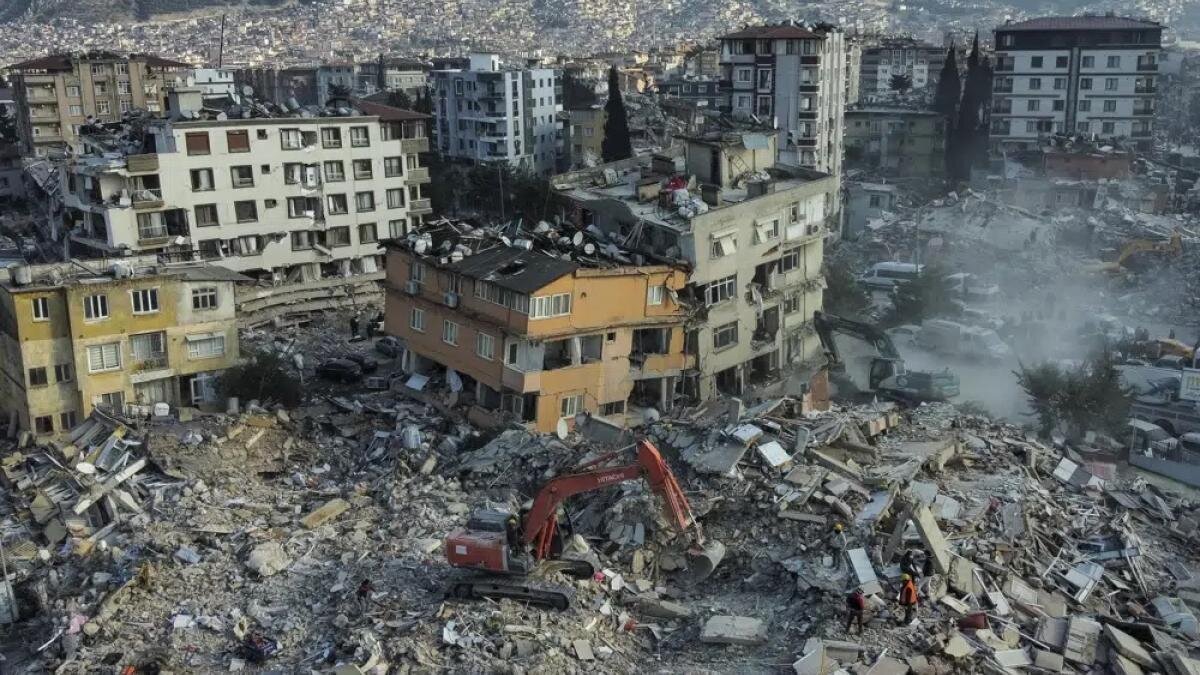Preliminary damage assessment of February 6 earthquakes in Syria

TEHRAN - An aspect of the February 6, 2023 earthquakes in southern Turkey that is less discussed in the media is its devastation in Syria and the risk of earthquakes in Lebanon and the eastern Mediterranean.
With crumbling infrastructure and food shortages, Syria faces the scars of 12 years of brutal war with more devastating consequences in the February 6, 2023 earthquakes.
The northern region of Syria, which borders Turkey, was much more vulnerable than Turkish cities, with years of war and aerial bombardment that destroyed homes, hospitals, and clinics.
On February 20, 2023, a 6.3 earthquake (aftershock) ruptured a 25-kilometer-long fault between the city of Hatay (Antakya) and the coastal cities of Hatay province in Turkiye, but this aftershock also caused severe damage to the provinces of Idlib and Aleppo.
More than 100 landslides were detected in non-snowy areas. The officials in the areas that were not directly affected by the earthquake, such as Damascus, Homs, and Hama, have organized engineering committees, especially in the governorates, to examine the buildings damaged by the earthquake.
These areas have been already subjected to devastating bombings during the war years. In the earthquake disaster, the Syrian government uses current financial resources for earthquake-affected areas.
The number of buildings that collapsed directly in the affected governorates at the moment of the earthquake reached 199 residential buildings in Syria, without providing statistics on the extent of the destruction of industrial facilities, factories, and other workshops. It has been decided to demolish 292 more partially damaged buildings.
Some 4444 unsafe and unarmored buildings and 29,751 buildings that need retrofitting to become safe and 30,113 safe buildings that need maintenance have been reported. The exact location of these buildings in the affected provinces has not been mentioned.
This earthquake caused double destruction in the neighborhoods of Al-Shaar, Saad Al-Louz, Qadi Askar, Al-Masharqa, Salehin, Al-Misar, and other neighborhoods located in the east of Aleppo city, which is one of the neighborhoods destroyed by the war in the region.
Many buildings in the historic city of Aleppo - the commercial hub before the Syrian war - collapsed. Aleppo is one of the oldest cities in the world that has been inhabited since the sixth millennium BC.
The city has an estimated population of 2.1 million in 2021 and was added to the UNESCO World Heritage List in 1986, and has been listed as a World Heritage in Danger since 2013 after the civil war broke out.
Significant damages have been reported in the historical citadel of Aleppo due to the February 6th, 2023 earthquakes. The western tower of the old city wall has collapsed and several buildings in the "Souks" have weakened.
The northeastern defense fences, many parts of the lantern dome of the Ayyubid mosque also collapsed, and the entrances of the castle were damaged, and the entrance of the Shahi defense tower was damaged.
Rebel groups were driven out of Aleppo in 2017 and the government took it back. Since then, many Syrians have been living in damaged buildings.
The province of Idlib, in the northwest of Syria, which was further devastated by the February 6th earthquakes, is the last stronghold of the rebels against the Syrian government.
Idlib is located in a fertile basin midway between Aleppo and Latakia and has been an important textile center and a market for one of Syria's agricultural regions.
During the Syrian civil war, the Idlib region became a base for various Syrian rebel groups in 2018. The last population estimate in 2003 showed its population to be around 120,000 people.
In Syria, and in the earthquake-affected provinces, 2 out of 3 children showed negative behavioral changes after the earthquake, such as panic attacks or increased crying. More than half of the households stated that their children are now having nightmares because they are constantly re-creating the recent crisis in their minds.
In crisis situations, women and children are at particular risk of violence and exploitation and must be supported with essential access to services such as safe spaces and medical care.
Mental health and psychosocial support are key at this time for earthquake survivors, especially vulnerable groups such as women and children.
This devastating earthquake in Syria has undoubtedly had a significant impact on the lives of women and children in the affected areas.
The author is a professor at the International Institute of Earthquake Engineering and Seismology, Tehran, Iran.
Leave a Comment